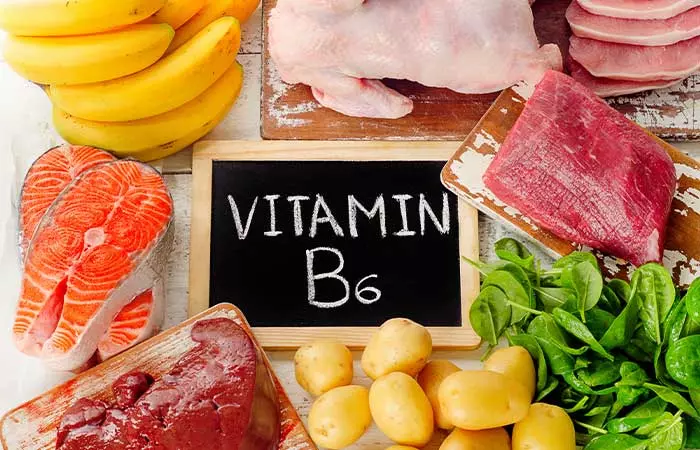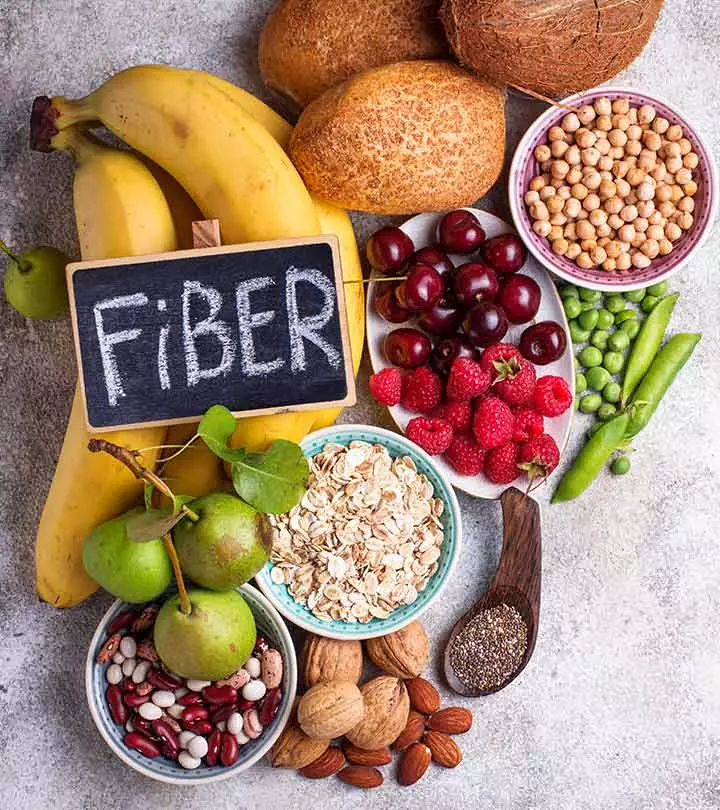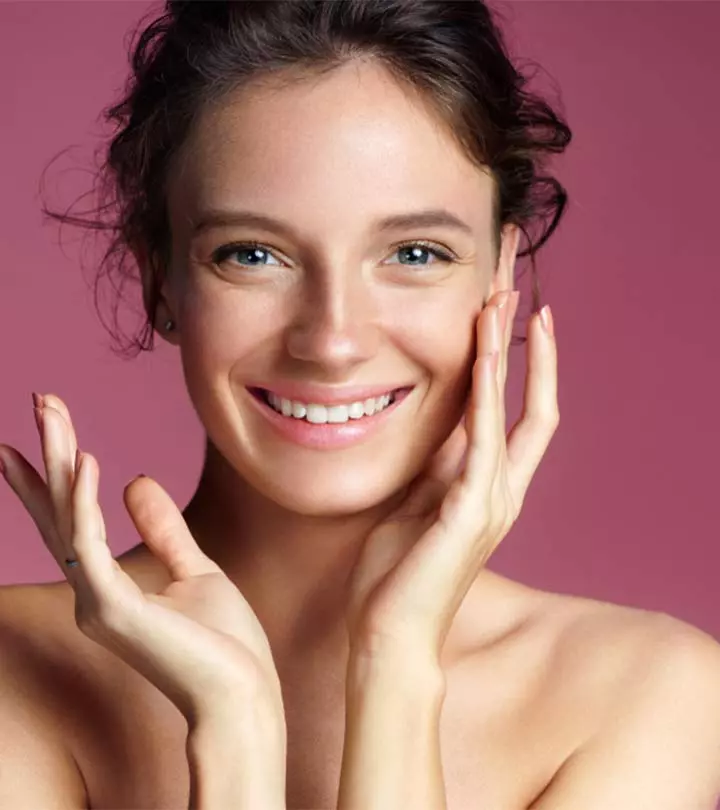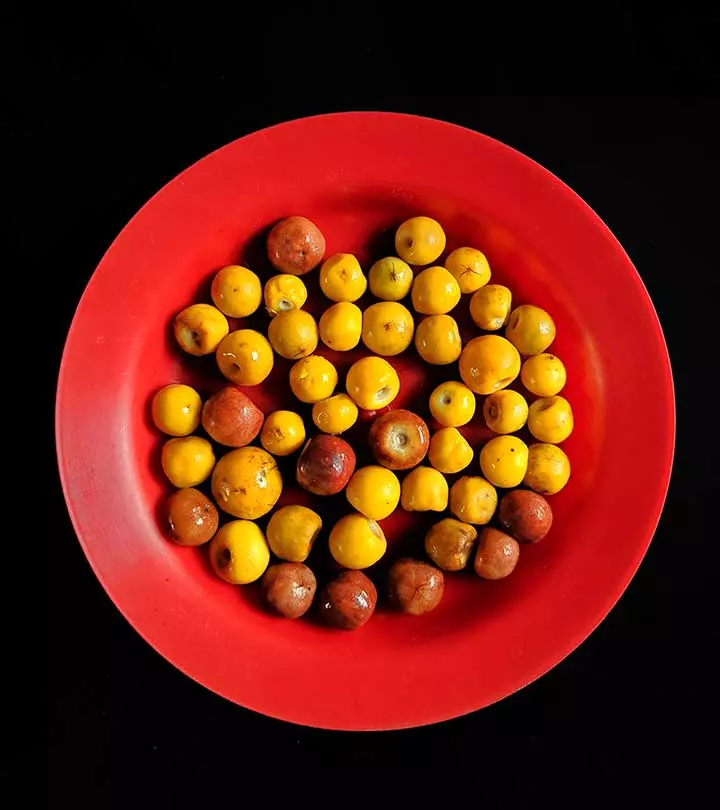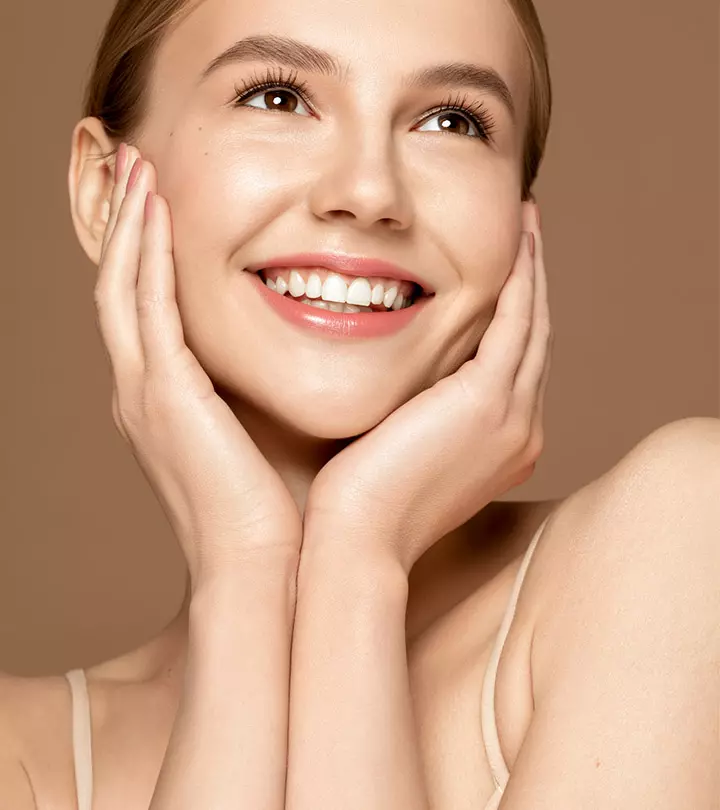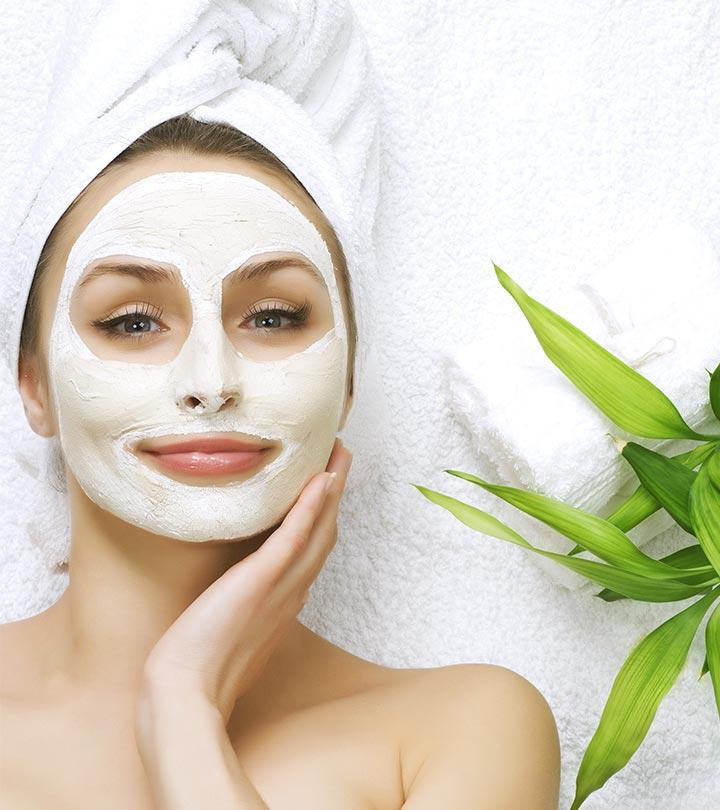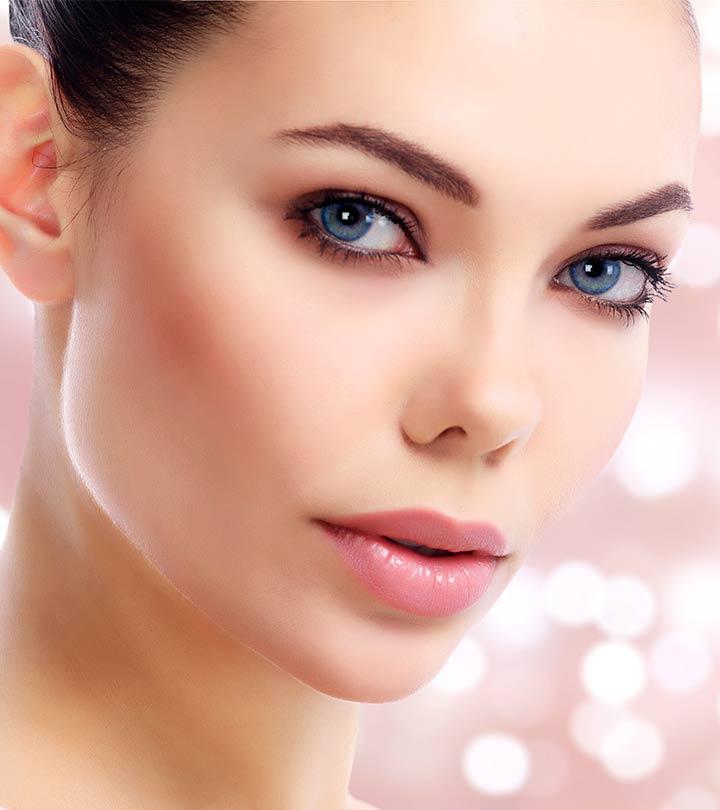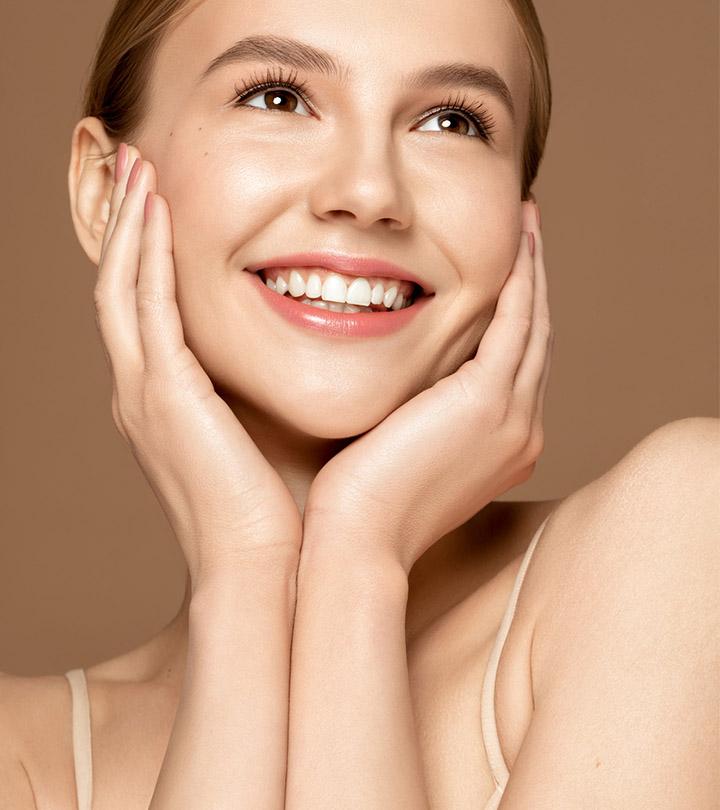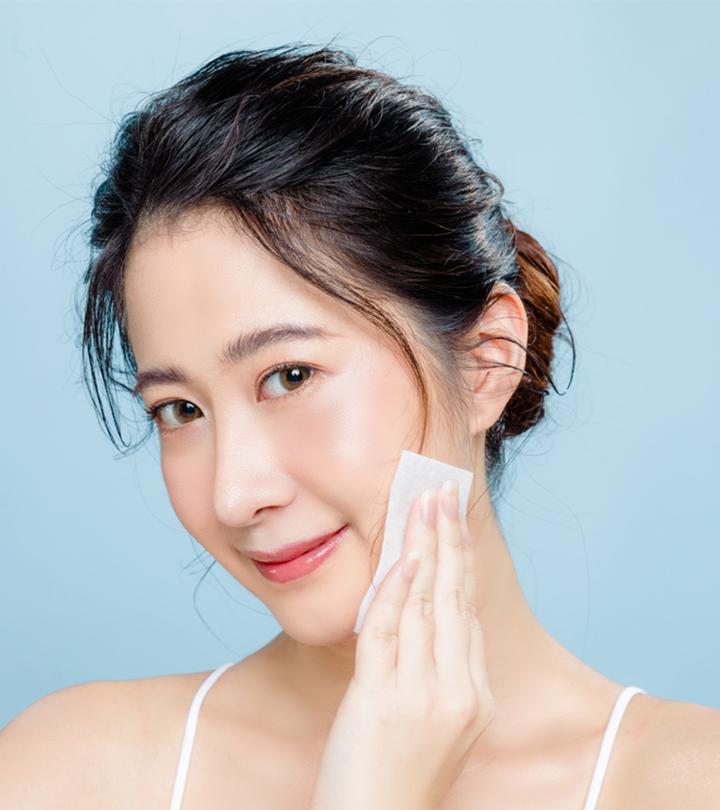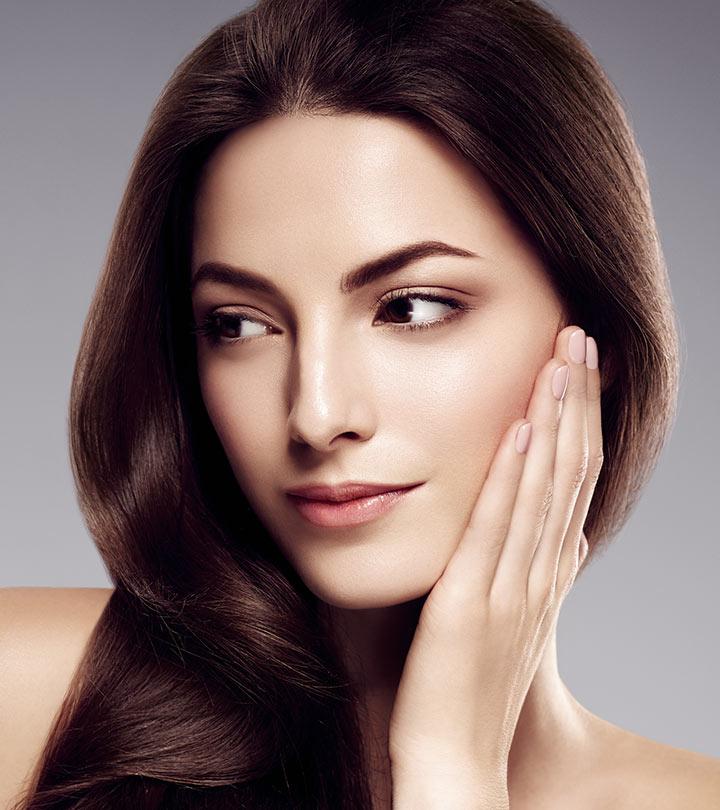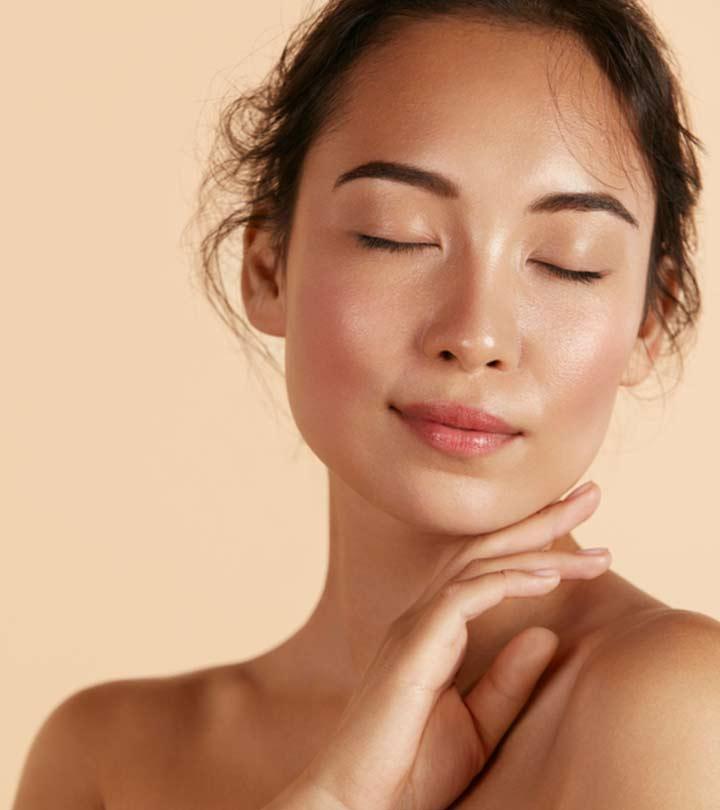6 Vitamins For Glowing Skin, Why You Need Them + Food Sources
Fulfill your daily needs with these nutritional elements to achieve that enviable shine.
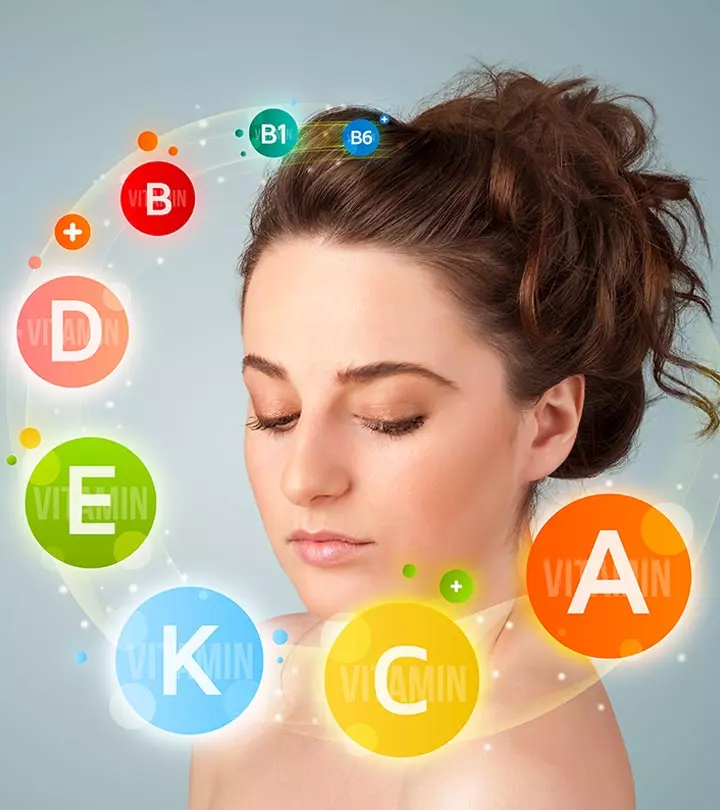
Image: Shutterstock
Your body needs vitamins to stay healthy and function properly. The same goes for your skin too. Some vitamins play a key role in maintaining your skin health. However, knowing just the vitamins for glowing skin is not enough. You must also understand which one to apply and which one to consume.
Supplements often work well when you have a deficiency, and for that, you must consult a doctor. However, you can avoid deficiencies through a balanced diet. Moreover, adding vitamin-enriched skin care ingredients to your routine ensures that your skin is protected against free radical damage. Keep reading to understand the connection between vitamins and skin and how to make the best use of the vitamins (through diet and skin care) to improve your skin health.
In This Article
The Best Vitamins For Healthy And Glowing Skin
Your skin reflects what you eat. Nourishing your body with foods dense in vitamins and nutrients is the only way to combat skin conditions and get an even skin tone. These vitamins repair cellular damage and promote skin regeneration.
1. Vitamin A: To Prevent Aging And Acne
If you are looking to minimize the signs of aging, you might be aware of retinol. Retinol is a form of vitamin A that is highly effective in improving the signs of aging. Vitamin A, when applied topically and ingested with food and other supplements, keeps many skin-related issues at bay.
How Does It Help?
According to a study, vitamin A:
- Reduces fine lines and wrinkles.
- Boosts collagen production, which increases the elasticity of your skin.
- Improves skin appearance.
- Reduces damage caused by free radicals (1).
- Prevents acne.
A study found that people with low levels of vitamin A or retinol had severe acne and other skin conditions, such as atopic dermatitis (2).
References
Articles on StyleCraze are backed by verified information from peer-reviewed and academic research papers, reputed organizations, research institutions, and medical associations to ensure accuracy and relevance. Read our editorial policy to learn more.
If you want to increase your vitamin A intake, consume foods like:
- Sweet potato
- Butternut squash
- Spinach
- Egg yolks
- Carrots
- Seafood
- Bell peppers
- Cod liver oil
- Whole milk
- Tomatoes
You can also take vitamin A supplements that are readily available in pharmacies. However, it is not wise to take any supplements without consulting the doctor.
For Topical Application
Retin A, Tretinoin, Retinol, Renova, Retinaldehyde – these are all types of vitamin A found in skin creams.
While retinol is readily available as an over-the-counter medication, you will need a doctor’s prescription to get retinoids. This is because retinoids are stronger and do not suit every skin type. Retinol and the other forms are a bit milder and are generally irritation-free.
If you are applying retinol or similar types of vitamin A, remember that its efficacy decreases in sunlight. Hence, it is better to apply it during the night. Also, if you are using it for the first time, don’t apply it every day. Use it every other day, unless advised otherwise by the dermatologist.
 Trivia
Trivia2. Vitamin B3: To Treat Sun Damage And Pigmentation
While exposure to the sun rays gives you your daily dose of vitamin D, overexposure can cause significant damage to your skin. Long-term exposure to UVA and UVB rays can cause pigmentation, fine lines, and dark spots. Vitamin B3 (also called niacinamide or nicotinamide) can safeguard your skin from the damaging effects of sun rays.
How Does It Help?
As per research:
- Oral Vitamin B3 (also known as niacinamide or nicotinamide) protects your skin from sun damage and may also prevent nonmelanoma skin cancer in patients who are at high risk (3).
- It reduces hyperpigmentation (which is caused by sun exposure) by preventing the transfer of melanosomes (sites for synthesis and storage of melanin) from melanocytes (melanin-forming cells) to keratinocytes (skin cells) (4).
- It minimizes the aging process of your skin by working on fine lines and dark spots caused due to excessive UV exposure.
- It also improves your skin texture and elasticity.
References
Articles on StyleCraze are backed by verified information from peer-reviewed and academic research papers, reputed organizations, research institutions, and medical associations to ensure accuracy and relevance. Read our editorial policy to learn more.
If you are someone who mostly consumes processed foods, you may be at risk of being deficient in this critical vitamin. Include these foods in your diet and get your daily dose of vitamin B3:
- Mushrooms
- Tuna
- Turkey
- Sunflower seeds
- Avocado
- Green peas
- Liver
- Peanuts
- Chicken breast
- Kidney beans
You may also take vitamin B3 supplements after consulting your doctor.
For Topical Application
You can buy niacinamide powder, mix it with your moisturizer or cream, and apply it to your face.
One thing you need to remember is that niacinamide is soluble in water. Hence, your moisturizer needs to be water-based. Otherwise, the vitamin will not mix properly, and it won’t be of any use.
The best way to use niacin for skin is to make your own moisturizer. Combine aloe vera gel with niacinamide powder, and it’s good to go!
3. Vitamin C: To Amp Up Your Antioxidant Levels
This vitamin is mainly found in the epidermis (outer layer of the skin) and the dermis (inner layer of skin). Vitamin C plays a vital role in maintaining skin health and the formation of collagen.
How Does It Help?
According to a study published in Nutrients, vitamin C:
- Promotes collagen production in your skin (collagen keeps your skin elastic).
- Prevents photodamage caused by UV exposure.
- Maintains antioxidant levels in your body.
- Prevents aging and reduces the appearance of wrinkles (5).
Vitamin C is transported to your skin through the blood. It keeps your skin hydrated and hair healthy.
References
Articles on StyleCraze are backed by verified information from peer-reviewed and academic research papers, reputed organizations, research institutions, and medical associations to ensure accuracy and relevance. Read our editorial policy to learn more.
If you think you are not getting enough vitamin C from your diet, you can consume:
- Red pepper
- Guava
- Strawberries
- Broccoli
- Papaya
- Peas
- Grapefruit
- Brussel sprouts
- Cauliflower
- Kale
For Topical Application
If you want to use vitamin C topically, the best way to do it is by using a cream or moisturizer containing it. This is a necessary ingredient that you can find in serums, night creams, and moisturizers.
A blogger expresses satisfaction with their morning vitamin C routine on their blog: “My complexion is much brighter, and my skin looks healthier and more radiant (i).” The blogger further adds, “It helps to protect my skin from environmental stressors like pollution and UV rays. It also brightens my skin tone and evens out any dark spots or discoloration.”
If you want to go the natural way, you can take a vitamin C scrub by mixing lemon juice with sugar or salt. However, don’t use it regularly and dilute it before applying it to your skin.
Also, topical Vitamin C makes your skin photosensitive. Hence, if you are going out in the sun, do not forget to apply sunscreen.
With the use of a DPPH radical scavenging assay, this graph compares the in-vitro antioxidant activity of ascorbic acid and honey ascorbic acid derivative (HAAD). The scavenging activity is shown on the Y-axis, while the samples’ concentrations in g/mL are shown on the X-axis. The graph demonstrates that when sample concentration rises, HAAD and ascorbic acid’s percentage of DPPH radical inhibition rises as well. It demonstrates that ascorbic acid has a higher radical scavenging ability at higher concentrations than HAAD does at lower ones.
Graph showing DPPH radical scavenging activity
Source: Graph showing DPPH radical scavenging activity4. Vitamin E: To Prevent Dryness
You have probably seen “Vitamin E” shining like a bright star on the labels of cosmetic products. This is because it is widely used for its dermatological benefits. Vitamin E is a free radical scavenger, which means it neutralizes the harmful free radicals and keeps your skin healthy.
How Does It Help?
A study suggests that vitamin E:
- Minimizes damage caused by the harmful UV rays, such as dark spots.
- Prevents dryness and keeps your skin conditioned.
- Reduces oxidative stress and diminishes signs of aging.
- Keeps your skin moisturized.
- Reduces skin inflammation (6).
Applying vitamin E topically helps prevent skin conditions, but its efficacy decreases after exposure to the sun. Hence, you must get enough vitamin E through your diet.
References
Articles on StyleCraze are backed by verified information from peer-reviewed and academic research papers, reputed organizations, research institutions, and medical associations to ensure accuracy and relevance. Read our editorial policy to learn more.
You can increase your vitamin E intake by including the following foods in your diet:
- Almonds
- Spinach
- Kale
- Hazelnuts
- Avocado
- Papaya
- Parsley
- Olives
- Broccoli
- Pine nuts
For Topical Application
Vitamin E capsules are readily available in medical stores. You can swallow them whole or squeeze out the liquid (vitamin E oil) and apply it to your face and other areas.
Apply vitamin E oil directly on the skin only if you have extremely dry skin or serious skin issues, such as psoriasis and eczema. Otherwise, it is better to mix the vitamin E oil (squeeze about 3 capsules) with a tablespoon of olive oil and then massage this mixture on your face or the area you want to focus on.
5. Vitamin K: For Stubborn Dark Spots And Scars
Vitamin K is best known for helping with blood clotting. It plays a crucial role in healing wounds and bruises. It also helps in treating several skin conditions and keeps your skin healthy.
 Did You Know?
Did You Know?How Does It Help?
- It fights wrinkles and dark circles. A study conducted in 2004 found that the application of an under-eye gel containing 2% vitamin K, along with 0.1% of each retinol and vitamins C and E, reduced wrinkles and dark circles significantly (7).
- Another study found that it helped in lowering purple discoloration on the skin and dissolved skin pigmentation and bruises (8).
References
Articles on StyleCraze are backed by verified information from peer-reviewed and academic research papers, reputed organizations, research institutions, and medical associations to ensure accuracy and relevance. Read our editorial policy to learn more.
You can increase your intake of vitamin K by consuming:
- Cabbage
- Broccoli
- Lettuce
- Turnip greens
- Kale
- Swiss chard
- Romaine
- Parsley
- Cauliflower
- Cereals
Vitamin K is found in various forms. Vitamins K1, K2, and K3 are easily found in all types of foods (mainly plants), but you will also get dietary supplements of vitamin K.
For Topical Application
Vitamin K creams are easily available in medical stores. Usually, doctors prescribe them to those who have undergone surgery (to help with the bruises) or for reducing stretch marks. These creams are also prescribed for treating dark circles, spider veins, and any other skin issues. Consult your doctor before using them.
6. Vitamin B6 (Pyridoxine): To Reduce Acne And Pigmentation
Vitamin B6 or pyridoxine benefits skin health by aiding in skin maintenance and repair. It helps maintain a healthy skin tone and reduce skin issues.
How Does It Help?
As per research:
- Vitamin B6 has antioxidant properties that reduce skin pigmentation and prevent its appearance in the future. It also reduces oxidative stress on the skin and prevents premature skin aging (9).
- It helps regulate and maintain the sebum levels, thereby limiting the area of oily spots on your skin. This may help control and treat acne and improve the overall appearance of the skin (10).
Best Sources of Vitamin B3
Vitamin B6 (pyridoxine) is found in a variety of foods, including:
- Chicken
- Turkey
- Salmon
- Pistachios
- Chickpeas
- Brown Rice
- Banana
- Avocado
- Potato
- Spinach
For Topical Application
Topical application of vitamin B6 (pyridoxine) is uncommon due to potential skin sensitivity. However, it’s sometimes included in skin care products to support skin health, reduce redness, and soothe irritation.
Infographic: 5 Vitamins To Consume For Flawless Skin
If you are envious of people with gorgeous, glowing skin, it is time to take the proper measures to achieve it. In order to make your job easier, we have compiled a list of 5 vital vitamins that can help you attain flawless skin in the infographic below. Check it out now and say hello to healthy and beautiful skin!

Illustration: StyleCraze Design Team
It is critical to nourish your skin and body from within in order to achieve a healthy glow on your face. Try incorporating these vitamins along with vitamin B5 (pantothenic acid), vitamin B12 (cobalamin), vitamin B7 (biotin) beta-carotene, zinc, selenium, and iron into your diet and skin care routine, and maintain a healthy lifestyle to get the skin of your dreams. These are all vital nutrients that can play a powerful part in any skin care routine, whether you have a dull and lifeless complexion, acne, or other sorts of blemishes. So, instead of stocking up on cosmetic products, try some of these budget-friendly and healthy alternatives! However, remember that you should only take nutritional supplements under the supervision of a medical practitioner.
Frequently Asked Questions
Which vitamin improves skin color?
Vitamins C, E, and B12 may help improve your skin tone as they help reduce hyperpigmentation, stimulate collagen production, and reduce melanin production.
Which is best for the skin: vitamin C or vitamin E?
Both vitamins C and E are good for skin and play different roles in improving skin texture. They both help hydrate the skin and fight against oxidative stress.
Can I apply vitamin D capsules to the face?
Yes, you may apply vitamin D topically to improve your skin health.
What other nutrients can help you achieve glowing skin?
Consume nutrients like biotin, omega-3 fatty acids, zinc, folate, riboflavin, and thiamine for skin health.
Key Takeaways
- Consuming vitamin A-rich foods like carrots and tomatoes reduce fine lines and wrinkles.
- Vitamin C protects the skin from sun damage and promotes collagen production.
- Eating vitamin E-rich foods like papaya and almonds keep your skin hydrated.
- Topical application of vitamin K creams may help combat skin pigmentation.

Image: Stable Diffusion/StyleCraze Design Team
References
Articles on StyleCraze are backed by verified information from peer-reviewed and academic research papers, reputed organizations, research institutions, and medical associations to ensure accuracy and relevance. Read our editorial policy to learn more.
- Improvement of naturally aged skin with vitamin A (retinol)., Archives of Dermatology, US National Library of Medicine, National Institutes of Health.
https://www.ncbi.nlm.nih.gov/pubmed/17515510 - Vitamin A in skin and serum–studies of acne vulgaris, atopic dermatitis, ichthyosis vulgaris and lichen planus. The British Journal of Dermatology, Us National Library of Medicine, National Institutes of Health.
https://www.ncbi.nlm.nih.gov/pubmed/2933053 - A Phase 3 Randomized Trial of Nicotinamide for Skin-Cancer Chemoprevention, The New England Journal of Medicine, National Institutes of Health.
https://www.nejm.org/doi/pdf/10.1056/NEJMoa1506197 - The effect of niacinamide on reducing cutaneous pigmentation and suppression of melanosome transfer., The British Journal of Dermatology, US National Library of Medicine, National Institutes of Health.
https://www.ncbi.nlm.nih.gov/pubmed/12100180 - The Roles of Vitamin C in Skin Health, Nutrients, US National Library of Medicine, National Institutes of Health.
https://www.ncbi.nlm.nih.gov/pmc/articles/PMC5579659/ - Vitamin E in dermatology, Indian Dermatology, Online Journal, US National Library of Medicine, National Institutes of Health.
https://www.ncbi.nlm.nih.gov/pmc/articles/PMC4976416/ - The effects of topical application of phytonadione, retinol and vitamins C and E on infraorbital dark circles and wrinkles of the lower eyelids, Journal of Cosmetic Dermatology, US National Library of Medicine, National Institutes of Health.
https://pubmed.ncbi.nlm.nih.gov/17147559/ - Biological and Pharmacological Activities of Squalene and Related Compounds: Potential Uses in Cosmetic Dermatology, Molecules, MDPI.
https://www.mdpi.com/1420-3049/14/1/540 - Pyridoxine Has a Potential to Prevent the Appearance of Pigmented Spots: Effects on the Phagocytosis and Differentiation of Keratinocytes, National Library Of Medicine
https://pubmed.ncbi.nlm.nih.gov/36047208/ - The Effects of Pyridoxine (Vitamin B6) on Persistent Adolescent Acne, Journal of Investigative Dermatology
https://www.sciencedirect.com/science/article/pii/S0022202X15499865
Discover the important supplements you need to take for healthy hair and skin in the following video. Learn from expert advice on incorporating vital vitamins like A, B12, C, and E through a balanced diet. Check out the video!
Read full bio of Dr. Vindhya L Veerula
Read full bio of Anjali Sayee
Read full bio of Krati Darak











